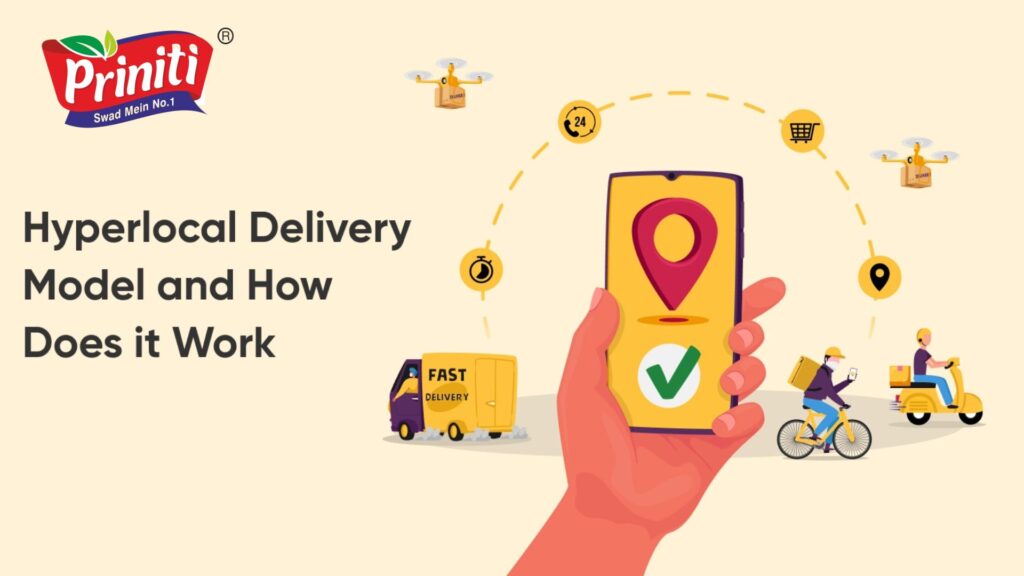
Introduction The Indian FMCG (Fast-Moving Consumer Goods) sector is witnessing a significant transformation. With rising consumer expectations for faster delivery, localized offerings, and real-time availability, traditional supply chains are under pressure. In this rapidly evolving landscape, hyperlocal distribution has emerged as a game-changing solution—connecting brands to consumers within specific, compact geographic zones.
What is Hyperlocal Distribution? Hyperlocal distribution refers to the delivery of goods and services within a narrow, specific area—often 1 to 10 kilometers. In FMCG, it means getting products from a local distributor or stockist to nearby retailers or even directly to customers quickly and efficiently.
Core Concepts:
Limited Geographic Area: This concept involves operating within a small, defined region such as a neighborhood or a radius of a few kilometers from the store. It allows businesses to localize their delivery efforts and optimize their supply chains for speed and efficiency.
Speed and Proximity: Hyperlocal models aim to achieve rapid delivery by relying on local networks of suppliers and vendors. This proximity ensures that products reach customers quickly, sometimes in under an hour.
On-Demand Service: Hyperlocal delivery platforms enable customers to place orders for immediate needs. This system supports real-time demand, allowing customers to receive goods almost instantly, often within minutes.
Local Hubs: Fulfillment is handled through nearby retail stores, mini-warehouses, or regional centers that are strategically positioned for quick access to customer locations. This helps reduce transit time and cost.
How It Works:
- Customer Places an Order: Customers use a mobile app or website to place their order for products.
- Order Fulfillment: The order is directed to the closest available store, dark store, or micro-warehouse.
- Delivery: A local delivery agent, either in-house or from a third-party service, collects the order and delivers it to the customer’s address within the shortest possible time.
Hyperlocal Distribution
Grocery Delivery: Services like Blinkit (formerly Grofers) and Zepto fulfill grocery orders in 10–20 minutes using micro-warehouses.
Food Delivery: Platforms such as Swiggy Instamart deliver ready-to-eat meals and essential items sourced from neighborhood outlets.
Pharmacy Delivery: Dunzo and other hyperlocal apps deliver over-the-counter and prescription medications from local pharmacies.
E-commerce: Brands now use local fulfillment centers to ship products faster in specific localities, speeding up last-mile delivery.
Why Hyperlocal Distribution Works for FMCG
- Speed & Efficiency: FMCG goods, being fast-moving, require minimal shelf time. Hyperlocal logistics reduce lag from production to purchase.
- Reduced Logistics Costs: Smaller delivery zones allow for better route planning, reduced fuel usage, and minimized warehousing costs.
- Localized Demand Fulfillment: Hyperlocal systems enable real-time demand tracking, so businesses can stock items aligned with local preferences.
- Strong Retailer Relationships: Frequent deliveries ensure shelves are always stocked and improve retailer satisfaction through dependable supply.
- Real-Time Feedback: Immediate consumer and retailer feedback help brands adapt offerings, pricing, and promotions for specific regions.
Benefits
- Faster Delivery Times: Hyperlocal delivery significantly reduces delivery times compared to traditional e-commerce logistics.
- Enhanced Customer Experience: Quick deliveries and convenient service improve customer satisfaction.
- Support for Local Businesses: Hyperlocal delivery models help small businesses reach a wider customer base and compete with larger companies.
- Reduced Shipping Costs: By focusing on smaller delivery areas, businesses can optimize delivery routes and potentially lower shipping costs.
- Meeting Changing Customer Expectations: In today’s on-demand world, customers expect fast and convenient delivery options, which hyperlocal delivery provides.
Benefits for FMCG Startups and Regional Brands
- Low Initial Investment: Businesses can avoid investing in large infrastructure by starting hyperlocal with limited capital.
- Faster Market Penetration: Testing in smaller markets allows brands to validate products quickly before expanding.
- Better Control: Brands can oversee sales trends, customer behavior, and stock levels with greater accuracy at a local level.
How to Build a Hyperlocal Distribution Network
- Identify High-Potential Zones: Select areas with high footfall or dense populations that fit your target customer profile.
- Partner with Local Stockists/Distributors: Leverage their existing delivery infrastructure and retailer relationships.
Final Thoughts:
Hyperlocal distribution is not just a trend — it’s becoming the backbone of FMCG growth in India. It helps brands stay quick, smart, and relevant in today’s fast-paced world. At Priniti Foods, we’re excited to adopt hyperlocal strategies that help us serve our customers better — with the snacks they love, delivered faster than ever.
Let’s Grow Locally — Together 🌍 Are you a city-level distributor, retailer, or delivery partner looking to collaborate? Let’s connect and explore hyperlocal growth opportunities. 📩 Message us directly or drop a comment below.
#PrinitiFoods #HyperlocalFMCG #IndainSnacks #FMCGDistribution #RetailGrowth #QuickCommerce #FMCGIndia
